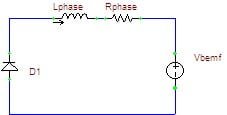Jeremy Harris said:This relationship between throttle setting and current ratio is important. I'm sure people here have read of non-current limited RC controllers popping at low speed, part throttle. If you try and baby one of these off the line, with just a tiny throttle setting, then what you're really doing is forcing the controller to deliver very high peak current pulses to the motor. AFAIK, these things don't have any form of current limiting, so if, for example, you had a 50V system, decided to only open the throttle 10% at start up and had a start up power requirement of 800 watts to get the bike accelerating, then although the battery current would be a nice, safe, 16 amps (at 800 watts) the motor current would be ten times this, 160 amps.
This would be true if the startup requirement was 800 watts but there is no "start up" requirement. Sure, if people felt that 800 watts was necessary to achieve the acceleration they desired, then that would be problematic...
In that situation, if the controller delivered 160 motor amps at 10% of the input voltage, it'd be obliged to send 100% of that at full throttle (Because the motor voltage would be 10x at much), or 1600 motor amps.
I think what's more likely to happen in real life is that people will "baby" the throttle with 50% or some such, and instead of producing a full throttle phase current of 320 amps (For example), it produces a lower 160 phase amps. That's still a lot, and switching losses will likely exceed the heat design of the controller. AFAIK, turning a prop doesn't involve 160 motor amp periods for long periods of time (i.e., more than a second) which is why phase current limiting isn't necessarily used (Though, yes, castle does use phase current limiting as startup until sync is accomplished.), and requiring 160+ motor amps for more than a few seconds will likely kill it (As is the case with someone accelerating).
The above discussion applies to speed-based throttle control. Not all throttle control is speed based.
If your battery current is low enough, though, your input power will be sufficiently low that max current that can be supplied to the motor will be below that "danger zone". I'd use something like my simulator to predict the phase current and see if it exceeds the controller's limitations. Also, higher gearing is excellent because it reduces the period of time that there's high current load on the motor. I think this is why friction-drives with 20:1 and up gearing ratios have done a lot better than bikes with a gearing ratio half that or less.





